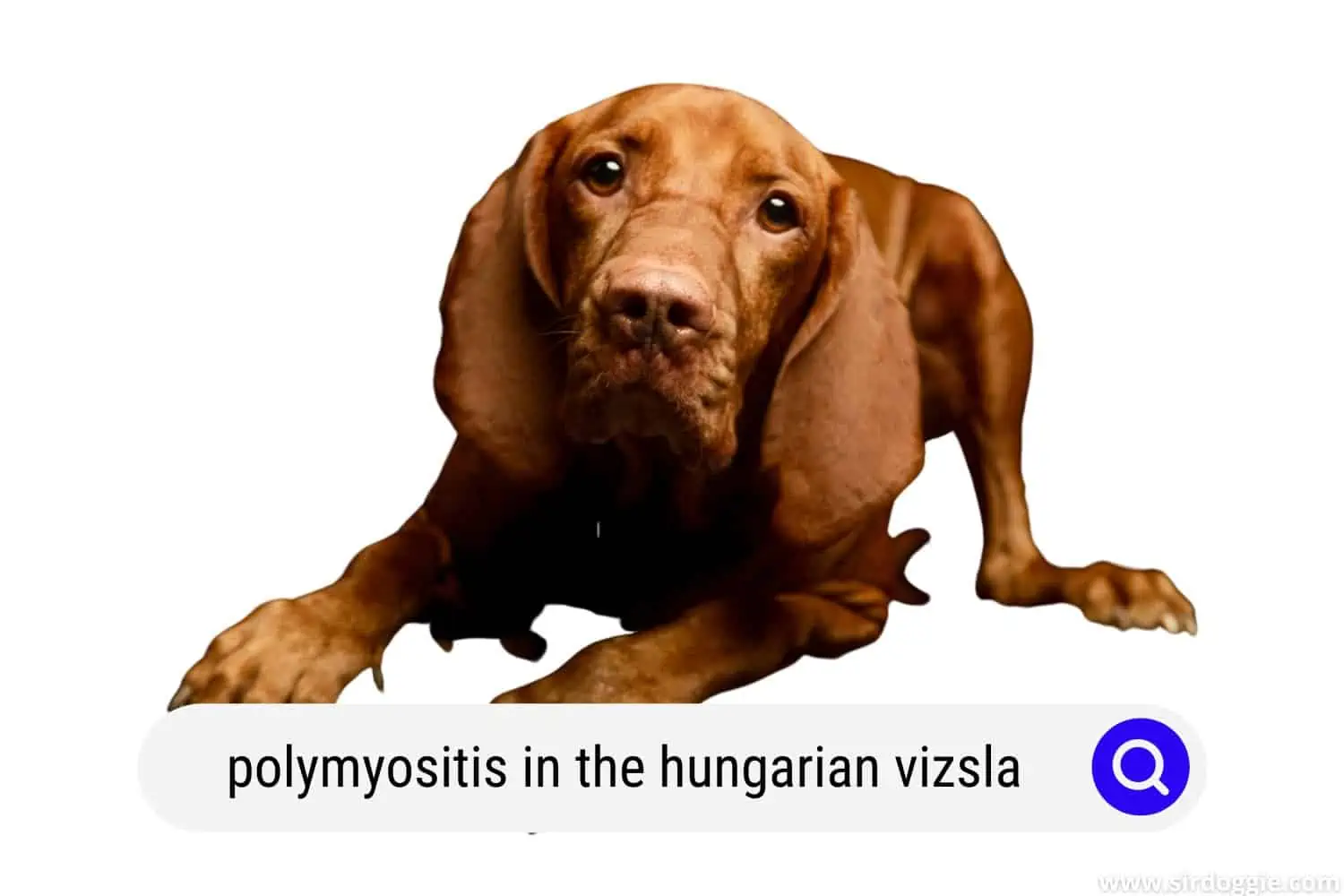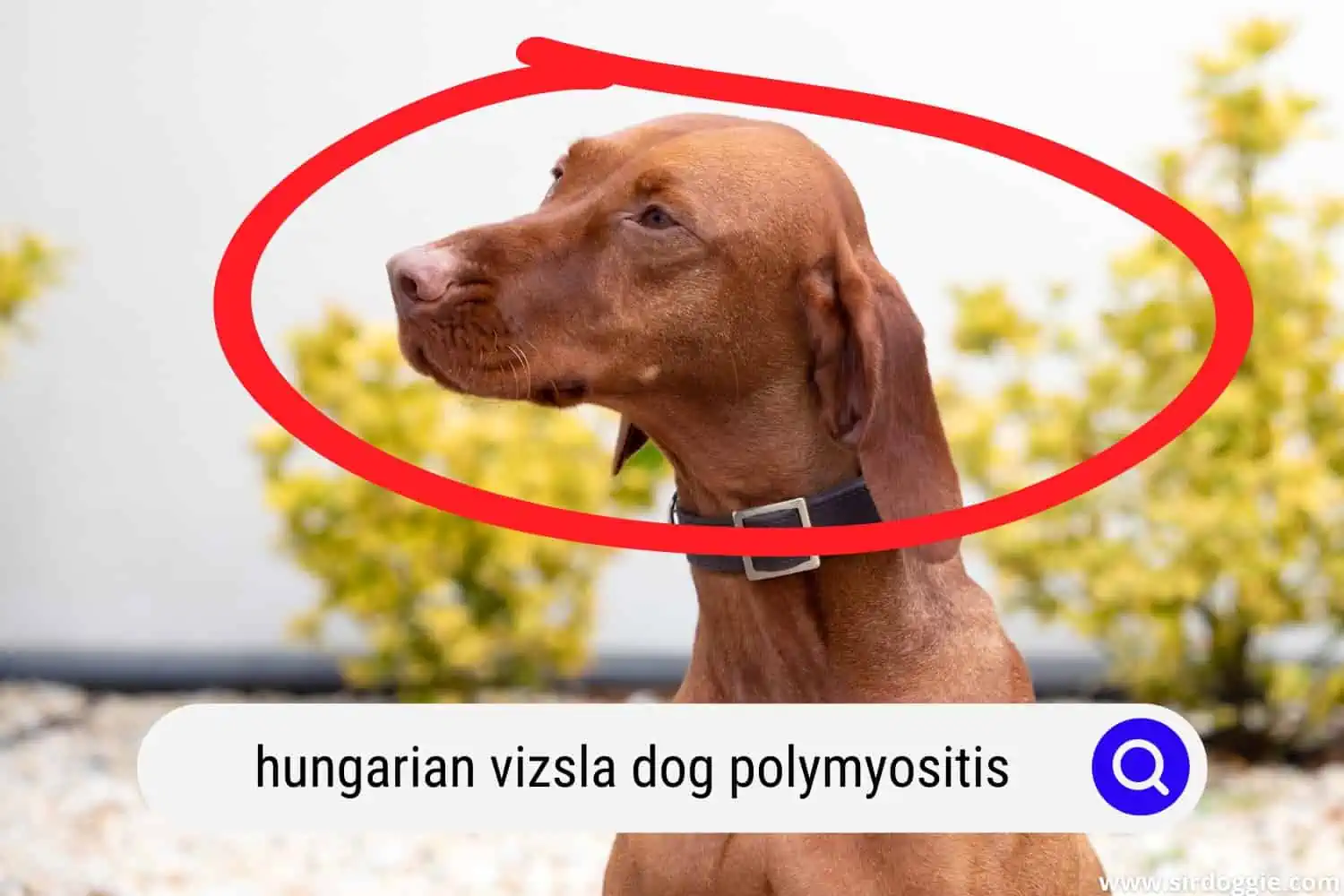Polymyositis in the Hungarian Vizsla
The Vizsla is a beautiful breed of dog that is characterized by its incredible personality and its high level of physical activity. It means that they are quite active and energetic dogs that need to carry out activities or exercises on a daily basis.

That is mostly due to the fact that they are used during hunting. For many years they have been considered one of the best companions of hunters.
They are friendly and loving dogs that need the affection of their owners who are with whom they create strong bonds. They need to be accompanied most of the day not to feel alone since if that happens, they can become anxious, which can negatively affect their health.
Having a Vizsla represents a great responsibility. We should not only worry about their physical condition but also about their diet and even emotional state. As we have said before, the Vizslas are very loving and need a lot of attention to feel loved. It is necessary to feed them correctly so that they can grow and develop without suffering from any disease.
Polymyositis in the Hungarian Vizsla
These dogs belong to one of the breeds most prone to suffer certain health conditions. There are several of them that occur at least once in the life of a Vizsla, and that is why it is essential to know, as a pet owner, the best ways to provide adequate care.
Polymyositis is one of the diseases that Vizslas suffer. It is more common in a dog than in a cat and is a systemic inflammatory muscle disorder that affects the appendicular muscles. It should be noted that this condition is not infectious, and its causes are unknown.
As we have said, scientists have not determined an identifiable cause of this disorder. Still, there are clues that it could be linked to systemic lupus erythematosus, which is an inflammatory disease that causes fatigue and joint pain. Other infectious agents that could activate polymyositis are Neospora caninum, Toxoplasma gondii, and Leptospira icterohaemorrhagiae.
The muscle groups of the Vizslas that are most affected are the tongue, the pharynx, the esophagus, and the head. Generally, this disease requires a triggering agent that occurs during Vizsla puberty, that is, during the canine’s first two years of life. We have previously mentioned some infectious agents that can trigger this condition, but some others are stress, vaccination, diet, etc.
Symptoms of Polymyositis in Vizslas
The most common symptoms that appear in a Vizsla with polymyositis are difficulties in swallowing food or water, loss of muscle mass in the head area, weakness when making physical movements, and excessive drooling.
The clinical signs of this disease can be acute or chronic. When it occurs in its acute form, the most frequent symptom is usually fever and general discomfort of the canine. If the disorder occurs in its chronic form, then the predominant symptom is muscle atrophy. However, generally speaking, a Vizsla can present weakness in its body, regurgitation, muscle palpation, dysphagia, fever, depression, etc.
Polymyositis Treatments in Vizslas
Carrying out a diagnosis of the disorder that Vizsla is suffering from on time and considering the implementation of adequate treatments will allow us to control polymyositis.
The most common treatment to control this condition is the use of immunosuppressants such as prednisone and azathioprine taking into account that they must be combined with gastro protectants. This treatment must be carried out for several weeks or months, depending on the evolution and improvement of the Vizsla. Because the disease affects this type of canine differently, there are Vizslas that will require long-term treatment to prevent relapse.
Currently, thanks to various tests carried out by some specialists, it is advisable to use another type of immunosuppressant, such as Ciclosporin. We must bear in mind that these immunosuppressants that we have mentioned will not always respond correctly to the dog’s organism.
When a Vizsla suffers from polymyositis, one of the most significant difficulties it presents is the fact of eating from a bowl or container. That’s because one of the most common symptoms is difficulty swallowing food and drinks. The most recommended is to feed them with a spoon to help them eat.
Studies about Polymyositis in Vizslas
This disease is rare in dogs, but it is still essential to know about it. Scientific studies have not been able to verify 100% of the cause of this disorder. However, specialists think that it originates through triggers. In addition, many of them, through various tests, have concluded that polymyositis is a genetic disease and that the immune system mediates it.

Conclusion
Polymyositis is a type of autoimmune inflammatory myopathy that generally affects the Vizslas muscles. Usually, it causes weakness in the body of this type of dog and can also produce aesthetic changes in the volume of the muscles since these are the areas affected by this condition.
Verifying the exact moment at which your dog has started to suffer from this disorder will allow you to carry out the proper diagnosis and treatment. In this case, the best thing you can do is take your Vizsla to the vet or a specialist not only to detect this pathology but also to determine the guidelines to follow in its treatment.
The forecast about Vizsla’s improved health is almost always favorable, but we should not ignore the fact that relapses can occur and the situation could worsen. That is why taking your Vizsla to a vet regularly is so important.

Family Dog Expert Author
Hi there! I’m Stuart, a devoted dog lover and family dog expert with over a decade of experience working with our furry companions. My passion for dogs drives me to share my knowledge and expertise, helping families build strong, loving bonds with their four-legged friends. When I’m not writing for SirDoggie, you’ll find me hiking, playing with my beautiful dog, or studying music.